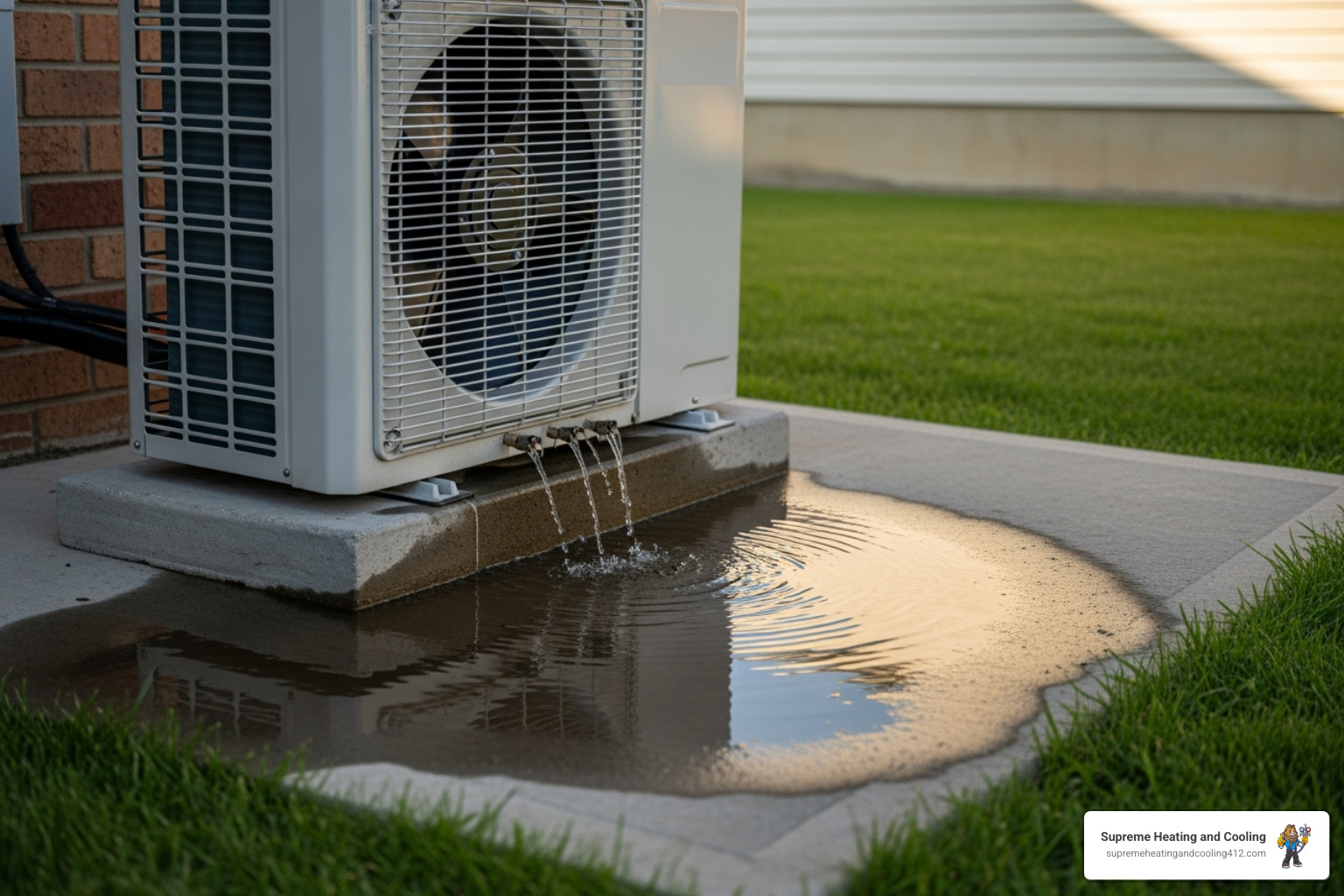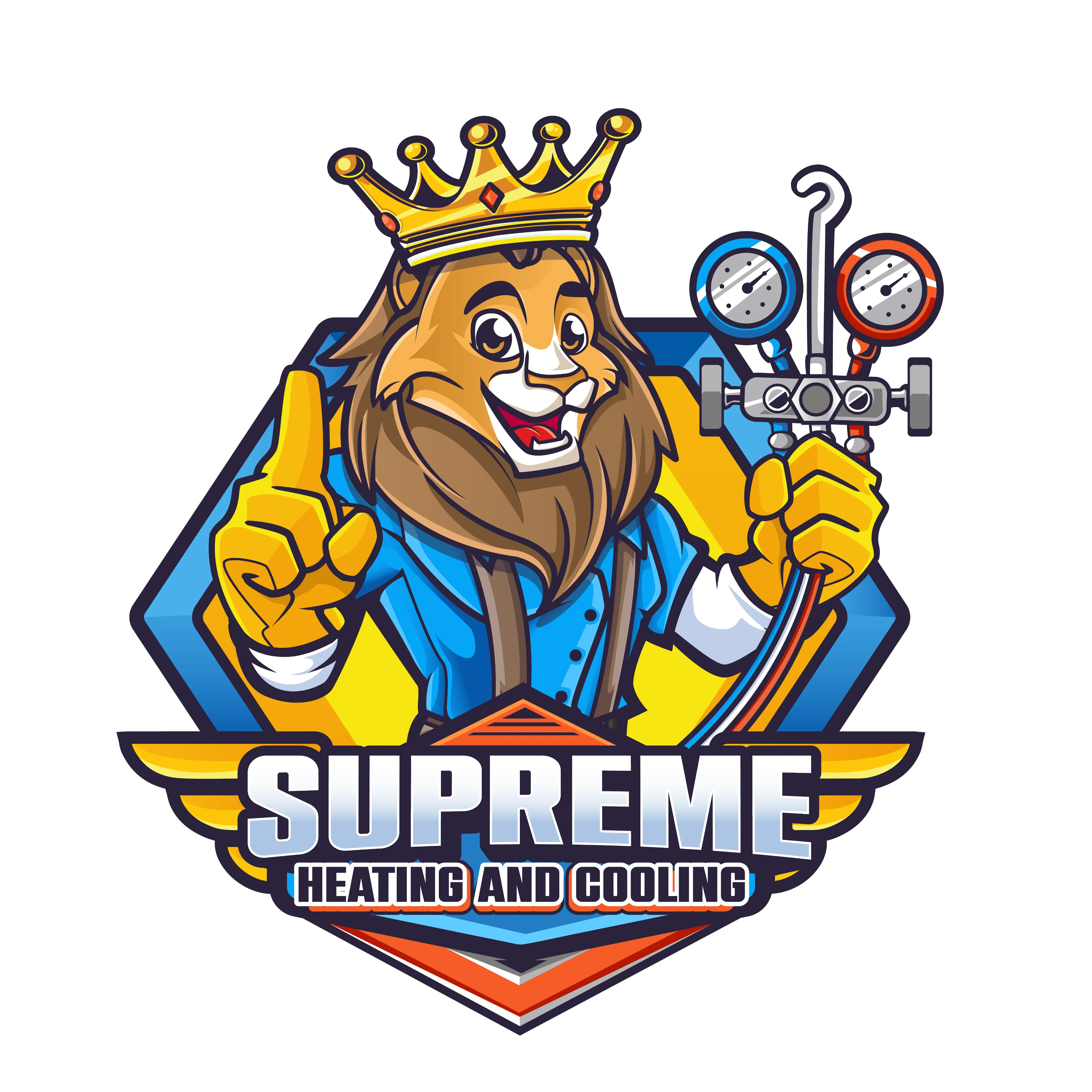Heat pumps are essential components for year-round comfort in Sewickley homes, providing efficient heating in winter and cooling in summer. However, when you notice water leaking from your heat pump, it can signal an underlying problem that needs prompt attention. At Supreme Heating and Cooling, we understand how concerning it is to see water pooling around this vital system. This guide offers Sewickley homeowners expert insights into why heat pumps leak water, how to recognize the source of the leak, effective repair options, and maintenance practices to keep your unit running smoothly.

Common Causes of Heat Pump Water Leaks in Sewickley Homes
Sewickley’s humid summers and variable weather conditions mean heat pumps often manage large volumes of moisture through their condensate systems. When these systems don’t function properly, leaks can occur. Here are the most frequent reasons your heat pump might be leaking water:
- Clogged or Dirty Condensate Drain Line: The condensate produced during the cooling cycle needs to be properly drained outside your home. Dust, algae, and debris can block the drain line, causing water to back up and leak around the unit.
- Damaged or Disconnected Drain Pan: The drain pan collects condensation from the evaporator coil. Cracks or rust in the pan, or a pan that has become detached, will cause water to spill onto your floor or the ground beneath the unit.
- Frozen Evaporator Coils: In colder weather, poorly maintained heat pumps may develop ice on the evaporator coils. When this ice melts, excess water can leak out if the drain system cannot handle it.
- Improper Installation or Tilt: Heat pumps must be installed with a slight tilt toward the drain side to facilitate water flow. Incorrect installation can result in water pooling and leaking.
- Refrigerant Leaks Misidentified as Water Leaks: Sometimes, leaks that appear watery or oily are actually refrigerant leaks. Differentiating between a refrigerant leak and a condensate leak is critical since refrigerant leaks require specialized repair.
How to Identify Condensate Water Versus Refrigerant Leaks
Distinguishing between the types of leaks is vital for proper repair:
- Condensate Water Leak Characteristics: Typically clear water pooling near the indoor unit or outdoor condenser. It follows patterns consistent with your cooling cycles and may drip steadily.
- Refrigerant Leak Characteristics: May look oily or have a slight chemical smell, and often coincides with a loss of system cooling efficiency or hissing sounds. Refrigerant leaks pose health risks and require certified technicians.
If you're unsure whether the leak is condensate or refrigerant-related, it’s best to contact a professional for an accurate diagnosis.
Professional Heat Pump Leak Repair Services in Sewickley
At Supreme Heating and Cooling, our trained technicians handle all aspects of heat pump leak diagnosis and repair with precision and care:
- Drain Line Clearing and Flushing: Removing blockages with professional cleaning tools to restore proper condensate drainage.
- Drain Pan Replacement or Repair: Fixing or replacing cracked or rusted pans to prevent future leaks.
- Coil Inspection and Defrosting: Cleaning and repairing frozen coils and ensuring your heat pump’s defrost cycle works optimally.
- Refrigerant Leak Repair: Detecting leaks using specialized equipment and safely repairing or recharging refrigerant as needed.
- Reinstallation and Leveling: Correcting the heat pump’s positioning to ensure proper drainage flow.
All repairs come with a focus on long-term reliability and efficiency so your heat pump can function optimally in Sewickley’s seasonal climate.
Preventing Future Water Leaks Through Maintenance
Regular maintenance is the best defense against heat pump leaks. Sewickley homeowners benefit from routine service that includes:
- Annual Professional Inspections: Checking key components, cleaning condensate lines, and assessing refrigerant levels before the heating or cooling seasons peak.
- Filter Replacements: Dirty filters restrict airflow, increasing coil freezing risk and water buildup.
- Cleaning Coils and Drains: Keeping evaporator coils and condensate drains free of dust and mildew.
- Monitoring System Performance: Identifying signs of refrigerant imbalance or mechanical wear early.
Proactive upkeep not only prevents leaks but also improves energy efficiency and extends your heat pump’s lifespan—critical in Sewickley’s climate where systems see year-round use.
Choosing the Right Technician for Heat Pump Leak Repairs in Sewickley
Repairing a leaking heat pump requires skill and experience to ensure proper diagnosis and effective solutions without causing additional damage. When selecting a technician, consider:
- Certification and Experience: Technicians should be trained specifically in heat pump systems and hold relevant HVAC certifications.
- Local Knowledge: Understanding Sewickley’s climate and common regional issues improves service quality.
- Transparency and Communication: Clear explanations of the problem and repair options help you make informed decisions.
- Comprehensive Service: Look for technicians who handle inspection, diagnosis, repair, and maintenance under one roof.
Supreme Heating and Cooling meets all these criteria, providing Sewickley homeowners with dependable, expert heat pump leak services that restore comfort and peace of mind.
Understanding the Broader Impact of Timely Heat Pump Leak Repairs
Addressing water leaks promptly does more than stop puddles or dampness:
- Prevents Structural Damage: Water leaks can cause wood rot, mold growth, and damage to flooring or walls.
- Improves Indoor Air Quality: Mold and mildew from leaks can exacerbate allergies and respiratory conditions.
- Maintains System Efficiency: Proper drainage and refrigerant balance keep your heat pump running at optimal performance, saving on energy bills.
- Extends Equipment Lifespan: Repairing leaks and maintaining system integrity prevents costly breakdowns and premature equipment failure.
For Sewickley homeowners, choosing professional heat pump leak repair ensures your investment in home comfort remains protected, especially given local weather patterns that place extra demand on HVAC equipment.
This comprehensive understanding of why your heat pump is leaking water in Sewickley homes equips you to spot issues early and rely on qualified expertise for repairs. Supreme Heating and Cooling combines local knowledge, skillful service, and dedication to quality to help you maintain a dry, efficient, and comfortable home year-round.

.svg)

.webp)


.svg)
.webp)
.svg)
